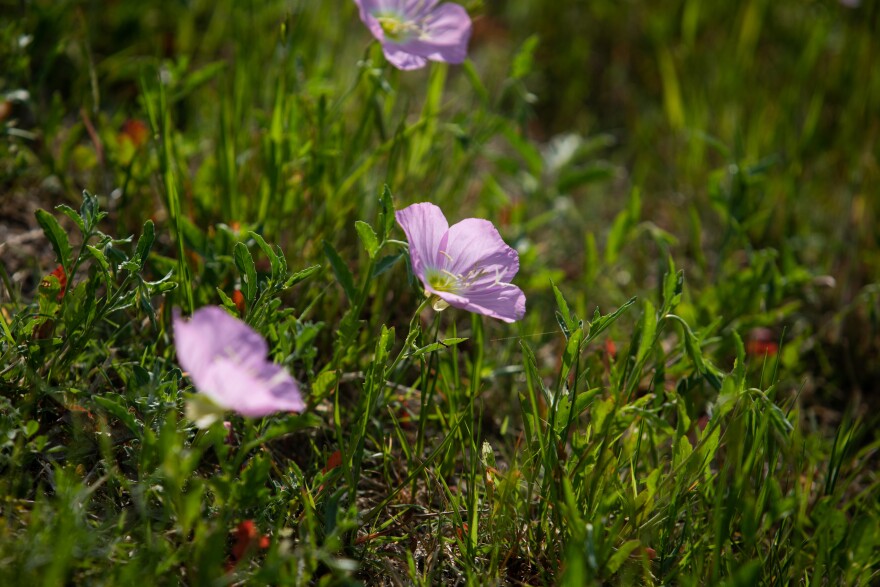Peak bluebonnet season is happening now across Central Texas. But, thanks to the encroaching drought, it may not last long.
That was the message from Andrea DeLong-Amaya, director of horticulture at the Lady Bird Johnson Wildflower Center, during a wildflower update she gave Tuesday.
DeLong-Amaya says the bluebonnet season, which normally begins between February and late March, started “a little bit late this year” thanks to cool spring weather.
“The evening temperatures being a little bit warmer in the last couple of weeks has pushed things a little bit faster,” she said. “So that's why we're starting to see more now.”
But a dry spring forecast means the iconic flowers may not last long.
Without rain, DeLong-Amaya expects the bluebonnets to be gone from the region by the end of the month. But, she said, other wildflowers like pink evening primrose, phloxes, horsemint and blue curls should take their place.
Bluebonnets will also likely stick around longer to the north and in parts of the state that have received more rain.
“Just looking at the weather maps ... it looks like the best wildflower displays are going to be east of us between here and Houston,” DeLong-Amaya said. “You go around the Brenham area, there's some really nice patches of wildflowers blooming there.”

Bluebonnets tips and trivia
If you are hitting the road to experience the wildflowers, remember to stay aware of danger from traffic, fire ants and rattlesnakes.
DeLong-Amaya also urges people with bluebonnets on their property not to mow over the plants before they’ve had time to produce seeds for next year.
“When all the flowers are gone and you just have a lot of brown plants, it's important to leave them and let those seeds fall onto the ground,” she said. "The bluebonnets seeds look like little bean pods or pea pods.”
In fact, bluebonnets are in the same family of plants as beans and peas: the legume family.
“They're also related to red buds and mountain laurels," DeLong-Amaya said. “Even though they look like a pea, that's not something I would recommend eating."











